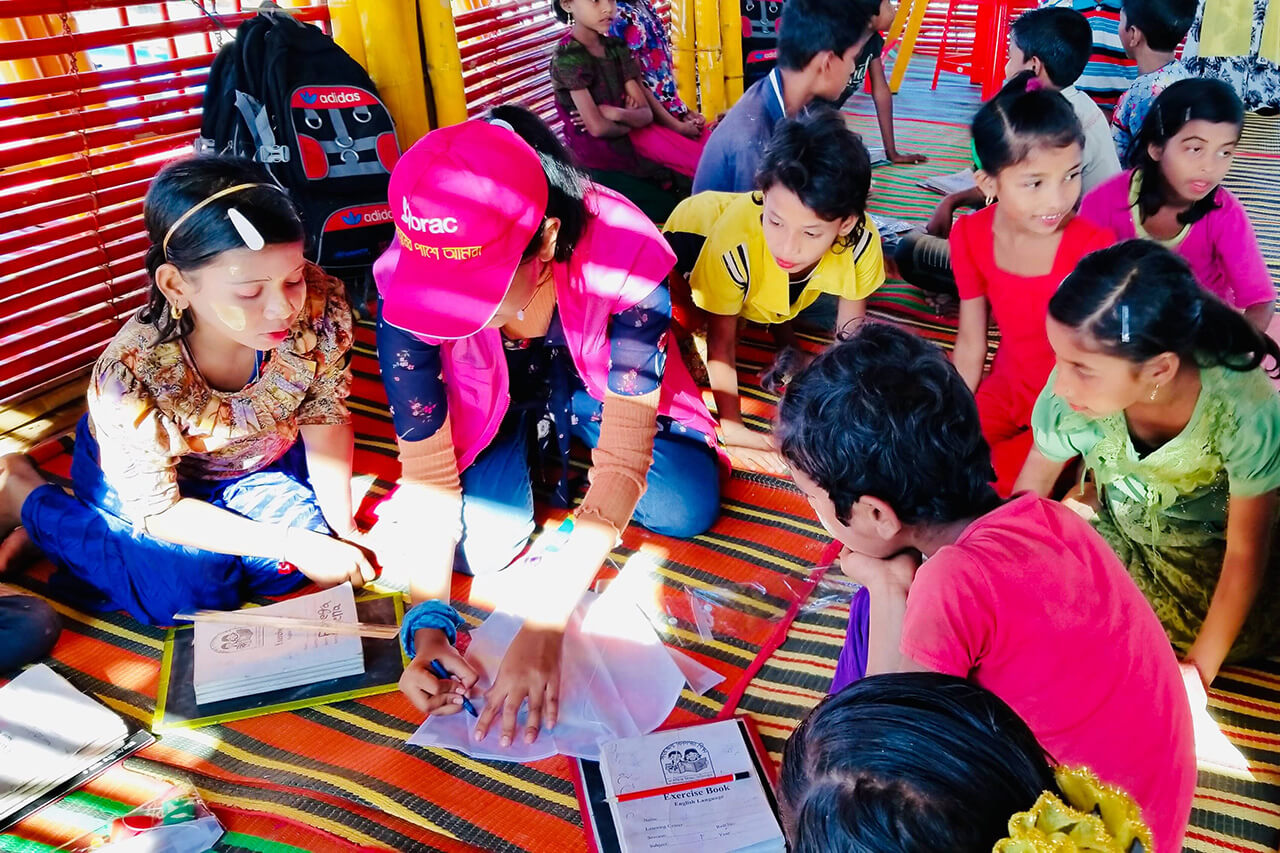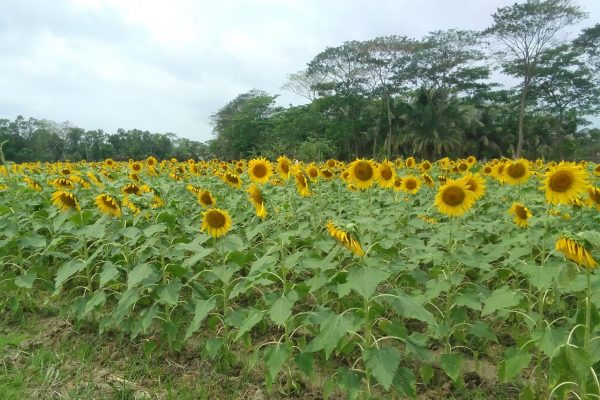Reading Time: 3 minutes
I found myself on a long-anticipated journey in 2019. With a black suitcase, a bright pink vest and many questions, an American-Bengali high school girl was heading for the site of an immense international collaboration.
The Rohingya settlements in Bangladesh and the humanitarian crisis that created it made numerous appearances on our television and news headlines back home in the US. Yet, like many modern crises, it became only a fleeting headline and nothing more. We briefly wondered what came of it, who was on the frontlines of aid, then moved on.
When I saw that the familiar Cox’s Bazar was the location of a UN-governed refugee settlement though, I decided that personally going on this journey could answer a lot of my own questions. Who are the Rohingya? What world do they live in, and what does it mean to give safety and hope to 1.3 million survivors of a genocide?

Our van made its way through winding roads lined with people and tarp-covered tents when we arrived at the camps. Blue and pink flags flew high in the sky, pinpointing schools, health clinics, food distribution and safe places for women and children. The education committee official, Shariful Islam of BRAC, explained the extensive and interlocking aid programmes, pointing to each as we passed. It was apparent that this organisation and hundreds of people with a passionate sense of responsibility are the true backbone of this initiative. As of March 2019, BRAC operates 639 learning centres in the Rohingya settlements, where over 55,000 children study English, Burmese, math, science and life skills. It takes courage, work and optimism to build for a displaced population.
The sun rises above us as we near the location of a school within the camp. Vibrant singing drifts through the air, and through the gaps in the walls of a red and yellow bamboo structure. The two-story learning centre looks a bit like a treehouse, and I’m curious about the children who come here daily. I find out that the boys and girls come in three shifts during the day, and vary in age from 4 to 12. They are singing in their native language, a rhyme about the parts of the body. They are engaged and curious, their smiles the warmest thing I have ever seen. The classroom is decked in their own crafts and drawings, and the vibrancy of the space is hopeful. A single chalkboard is a powerful tool, one that can transcend student’s disadvantages and provide them the knowledge to understand the world they will one day lead. I wish I could stay and tell them so many things. That they can dream of rainbow-colored hope, that people are praying and providing for them, and that our generation will try our hardest to remember them as our brothers and sisters and fellow torch-bearers of the future. Rainbows are always seen as the heralders of calm after hardship, and a beacon that flies high on the horizon. The new age and the coming decade is filled with potential and opportunities as the lines of connection and communication grow tighter and more numerous.
For now, it seems I have become a line between these children and my peers in our comfortable, Californian classrooms. Despite the persecution and violence their parents experienced and the trauma they all are burdened with, these children’s eyes shine in the midst of a sanctuary within their communities. The learning centres offer the children precious safety and opportunity for growth. The teachers and the organisers who created this all are truly the inspiring ones. While talking to them, I glimpsed what I could do in my own future.

Returning back to the US with a story to tell and share, I wondered how I could frame this sense of responsibility and potential. My classmates were curious about my trip, and asked what I had seen. I told them I had seen hope, and that they had helped to give some of it. I told them I had seen the kind of cooperation and vision that the modern world often tells us is impossible to achieve. I showed them pictures of children holding kites and untying bags filled with the toys my classmates gave, and told them that the future looked like this. Sure, this brand of optimism tends to fade, when our views become saturated by headline after headline of despair, repeated history and closed doors. Yet, for even the chance at a progressive future, there must be ones who aren’t afraid to say that they believe in a brighter, rainbow-colored hope. To turn hope into a reality both now and in the future, we must be willing to take substantive action and spread awareness.
Thank you BRAC for allowing me to see the incredible work you are doing to help the Rohingya population in Bangladesh. I have sincere gratitude for all the individuals who made this experience possible, and I hope they continue to demonstrate to the world what positive collaboration and strong vision can accomplish.
Raneem Iftekhar is a high schooler of Bengali heritage from Orange County, California.





